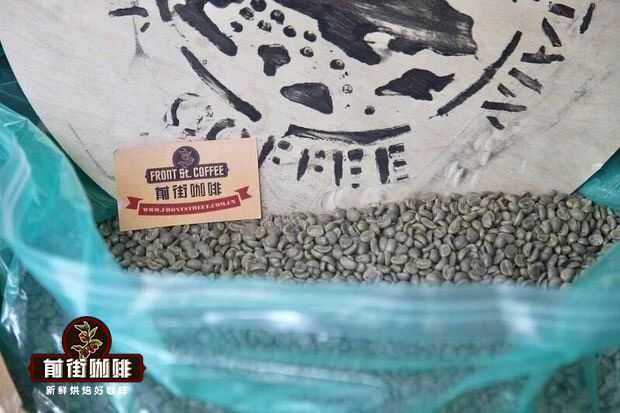How is the grade of coffee divided? What is the highest grade of coffee beans?
There are a wide variety of coffee beans, and the prices are high and low, so what's the difference between them? How is the grade of coffee divided? Today we will introduce the classification of coffee beans. Grades vary from country to region; for example, raw coffee beans are graded mainly according to the number of defective beans in 300g in Ethiopia, with nine grades from G1 to G9, and each grade corresponds to the number of defective beans. For example, there are less than 3 defective beans in G1 and 4 to 12 defective beans in G2, and so on.
But at the same time, African boutique coffee beans are produced in Kenya, where the grading system is different. Kenya takes the particle size of raw coffee beans as the grading standard: the largest coffee bean is grade E, where E stands for Elephant, which means elephant beans, and the particle size of E grade beans is about 18 mesh or above. The second is AA: this size is about 17018mesh AB; the size is about 1516mesh (about 6.0~6.4mm). C: about 1415 orders (about 5.6~6.0mm) PB: called small round beans, this is very rare, some people will particularly like the flavor of PB, so they will pick out the PB to sell. Coffee beans in Tanzania have a similar grading system, graded according to size.
There is also a large category of coffee beans based on the hardness of raw beans. The higher the altitude, the greater the temperature difference between day and night, the longer the coffee growing period, the harder the beans, the more nutrients absorbed in the beans, the more obvious the flavor substances will be. Many coffee-producing countries in Central and South America use this as the standard. Called SHB grade means extremely hard beans are above 1400 meters above sea level, slightly less are called HB grade hard beans between 1200 meters and 1400 meters above sea level, and SH grades are called slightly hard beans at an altitude of 1100 meters to 1200 meters above sea level. Most of our common boutique coffee is in this range.
Coffee beans in Colombia are graded by size, similar to those in Kenya.
Brazilian coffee beans are also graded according to the defect rate: NY.2, NY.2/, etc. Brazil believes that beans without defects can become NY.1, while beans without defects are absent. So there is no NY.1 level.

Important Notice :
前街咖啡 FrontStreet Coffee has moved to new addredd:
FrontStreet Coffee Address: 315,Donghua East Road,GuangZhou
Tel:020 38364473
- Prev

What is the better baking degree of coffee beans? What's the difference between the degree of coffee roasting?
What is the better roasting degree of coffee beans? let's first talk about what coffee roasting is. Coffee roasting refers to the process of roasting processed raw coffee beans to ripe coffee beans. Before a coffee bean comes to our hands, it should first produce ripe fruit on the coffee tree and be picked by coffee farmers for screening, and then deal with it.
- Next

How to distinguish the grades of raw coffee beans in Africa, and the introduction of the grading system in the main boutique coffee producing areas in Africa.
Today, let's talk about how the boutique coffee producing areas in Africa are graded. At present, the main boutique coffee producing areas in Africa are Ethiopia and Kenya. Although their territory borders, the grading system is completely different. Here is an introduction to you. Ethiopia as the birthplace of coffee species
Related
- Beginners will see the "Coffee pull flower" guide!
- What is the difference between ice blog purified milk and ordinary milk coffee?
- Why is the Philippines the largest producer of crops in Liberia?
- For coffee extraction, should the fine powder be retained?
- How does extracted espresso fill pressed powder? How much strength does it take to press the powder?
- How to make jasmine cold extract coffee? Is the jasmine + latte good?
- Will this little toy really make the coffee taste better? How does Lily Drip affect coffee extraction?
- Will the action of slapping the filter cup also affect coffee extraction?
- What's the difference between powder-to-water ratio and powder-to-liquid ratio?
- What is the Ethiopian local species? What does it have to do with Heirloom native species?

